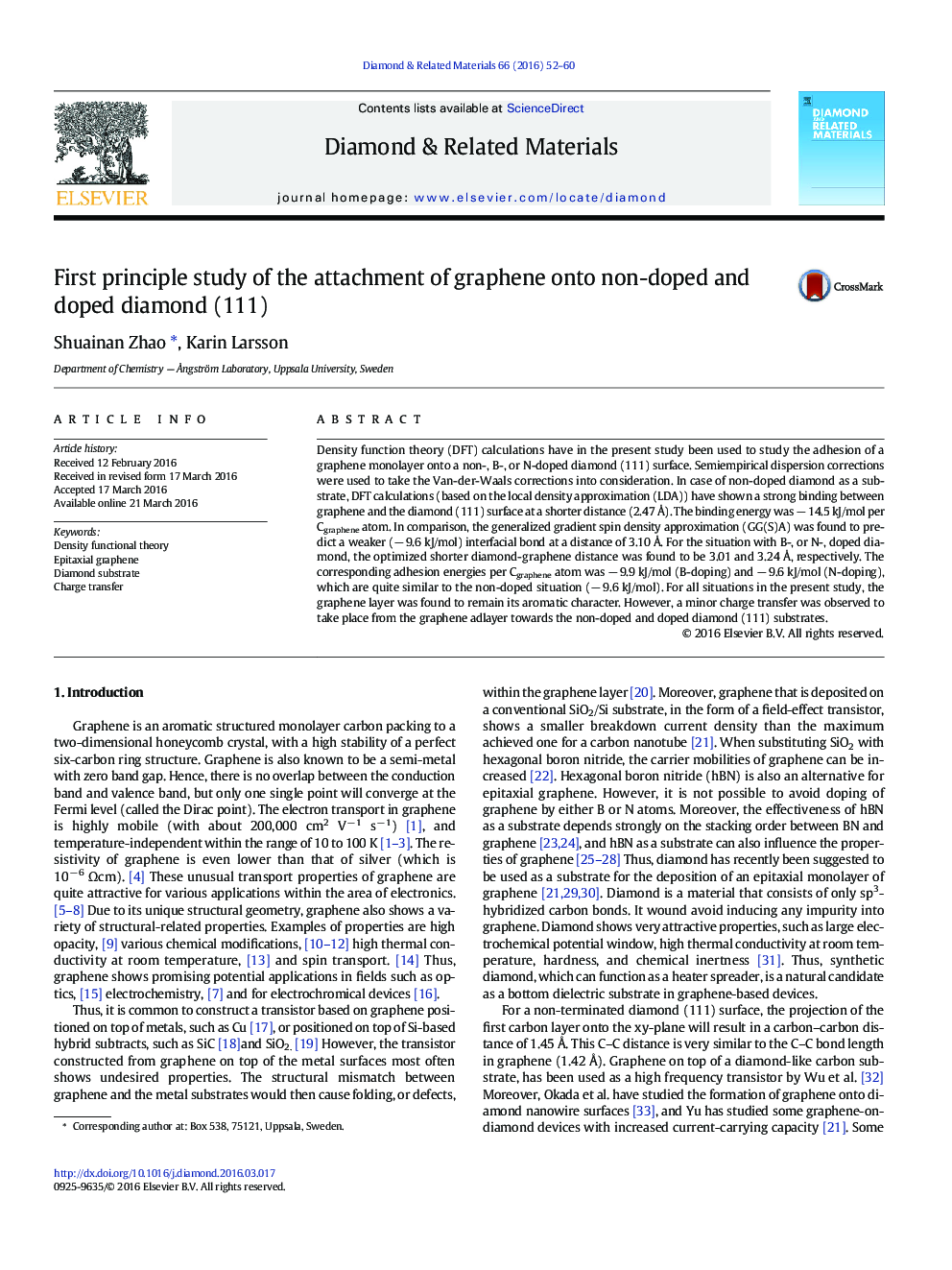| Article ID | Journal | Published Year | Pages | File Type |
|---|---|---|---|---|
| 701760 | Diamond and Related Materials | 2016 | 9 Pages |
•The graphene monolayer forms a diamond-like first two carbon layers within the clean diamond (111) surface at short distance.•Diamond-supported graphene adlayer without induced defects can still keep its intrinsic high carrier mobility.•B- and N-dopants in the diamond substrate will not influence the properties of graphene adhesion.•Some minor electron transfer takes place from graphene to the clean non-doped, or doped diamond substrates.•The diamond-supported graphene adlayer is being p-type doped.
Density function theory (DFT) calculations have in the present study been used to study the adhesion of a graphene monolayer onto a non-, B-, or N-doped diamond (111) surface. Semiempirical dispersion corrections were used to take the Van-der-Waals corrections into consideration. In case of non-doped diamond as a substrate, DFT calculations (based on the local density approximation (LDA)) have shown a strong binding between graphene and the diamond (111) surface at a shorter distance (2.47 Å). The binding energy was − 14.5 kJ/mol per Cgraphene atom. In comparison, the generalized gradient spin density approximation (GG(S)A) was found to predict a weaker (− 9.6 kJ/mol) interfacial bond at a distance of 3.10 Å. For the situation with B-, or N-, doped diamond, the optimized shorter diamond-graphene distance was found to be 3.01 and 3.24 Å, respectively. The corresponding adhesion energies per Cgraphene atom was − 9.9 kJ/mol (B-doping) and − 9.6 kJ/mol (N-doping), which are quite similar to the non-doped situation (− 9.6 kJ/mol). For all situations in the present study, the graphene layer was found to remain its aromatic character. However, a minor charge transfer was observed to take place from the graphene adlayer towards the non-doped and doped diamond (111) substrates.
Graphical abstractFigure optionsDownload full-size imageDownload as PowerPoint slide
